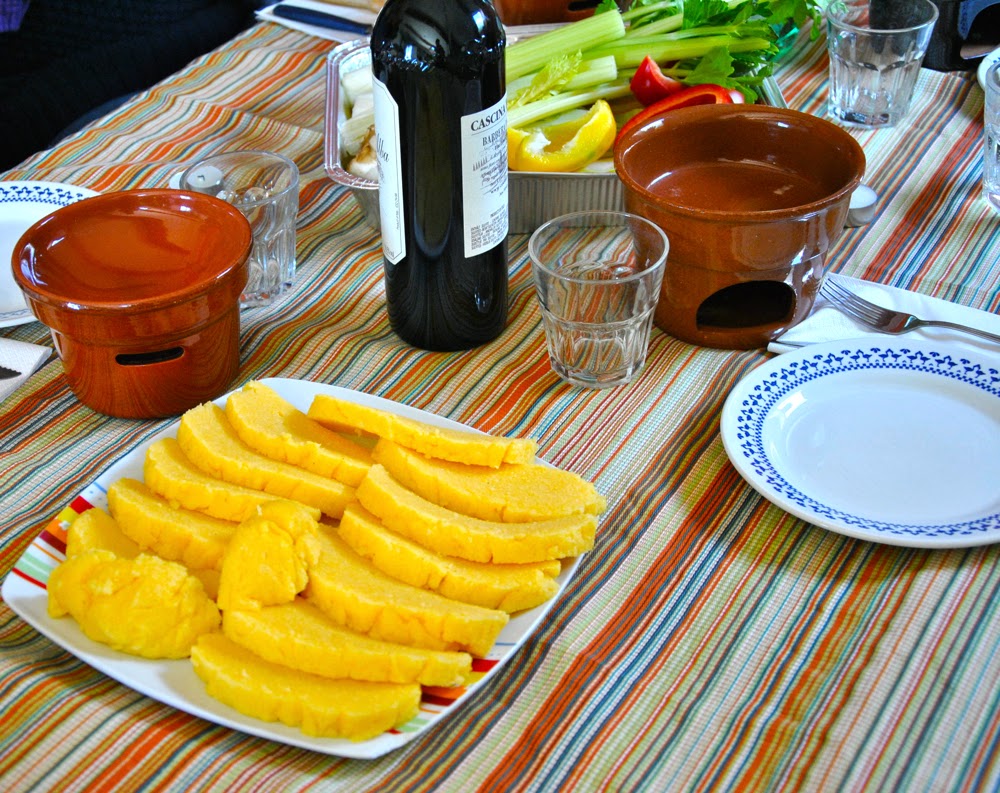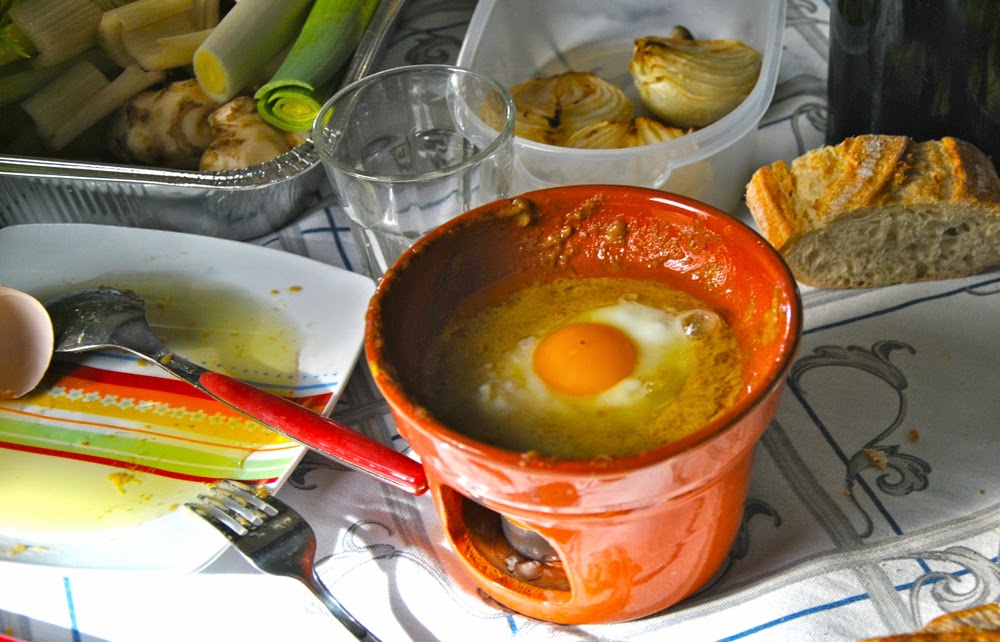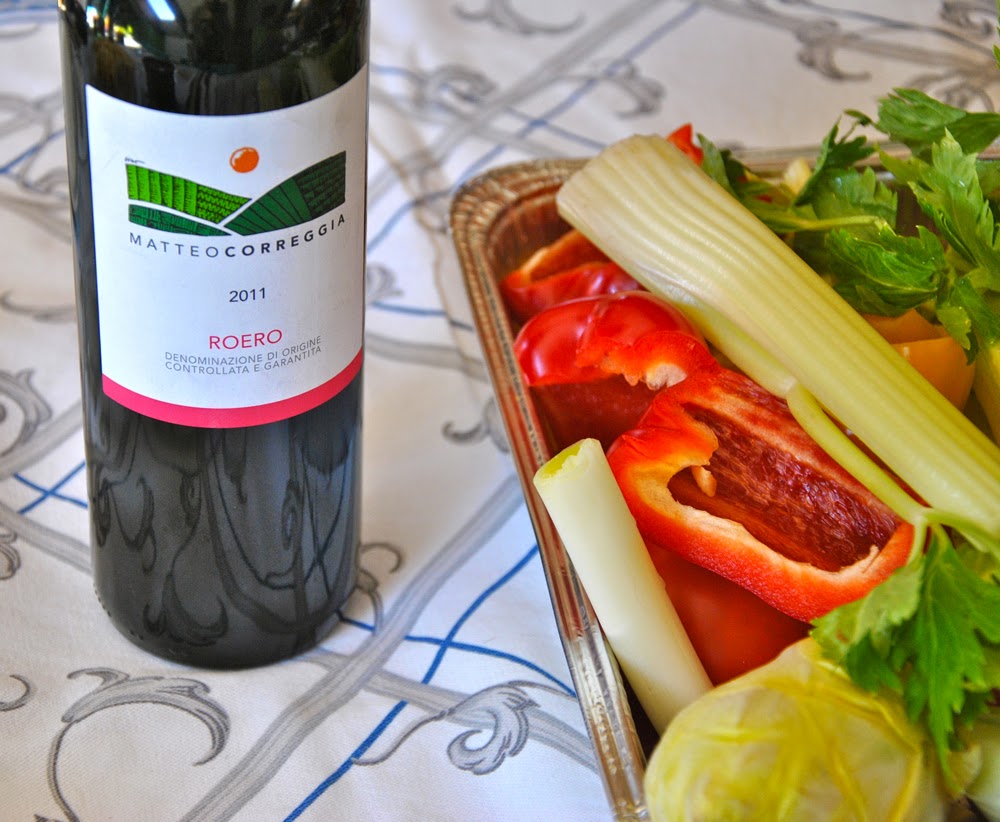This week we had our annual bagna caoda Sunday lunch. We don’t always eat it at the same place or with the same friends so it’s always fun to see how it differs from one family to the next.
This time we all contributed by bringing a bottle of wine and a few different vegetables. Most of them were eaten raw except for the grilled onions, boiled potatoes and roasted red peppers. Raw cabbage leaves seems to be the favorite because it almost cooks when you stab it in the sauce and let it heat up. When you take it out, it’s perfectly drippy and drenched in oily goodness. My recent obsession is sun chokes and these are fabulous with bagna caoda too.
One thing I really enjoyed about this version was the polenta! It gave you something heartier to eat with the sauce.
The main question when it comes to bagna coada styles is if and how much cream you add to it. Italians are obsessed with digestion and say that by taking out the little greenish stem in the center of the garlic clove, that helps you digest it better. But that’s not all, you have to boil and reboil (sometimes in milk) the garlic to soften it up. We are lucky because in Cuneo region we have “aglio di Caraglio” ALL-YO di CAH-RALL-YO) which is a Slow Food Presidium town famous for their digestable garlic terroir. The cream is also added to mellow out the garlic impact. I have gotta say though that I prefer the hardcore traditional way without any cream but this year’s was pretty darn good.
I truly love bagna caoda and could have eaten bowlfuls of it that day. But since I am breastfeeding and apparently babies hate garlic milk, I restrained myself to just a dip here and there, especially with fennel to sweeten my milk. The boys on the other end of the table went through 3 “fuyots” (special terracotta bagna caoda bowls that all Piemontese families have) and started dipping everything inside from bread to cheese and even eggs!
Since this was originally a peasant food, they didn’t want to waste any of the bagna coada sauce which might be hard to collect with cut veggies. That’s why they would crack open a fresh egg, to scoop up every last drop by doing what they call the “scarpetta” (little scooping, soaking shoe).
The wine to pair with a meal like this can be tough. You definitely want to go local since this is such a deep-rooted and cultural dish. You’ve got all those veggies and a potentially creamy or oily sauce so you need something fresh with good acidity to compensate. Nothing gets more Piemontese than Dolcetto. Although a Barbera is a stellar choice for its high acidity and versatility. We even drank a Roero from Matteo Coreggia which works because of the soft tannins, especially for dipping the polenta and cheese towards the end.
With such a meat-based cuisine here in Piemonte, I always look forward to this veggie buffet every year! Until next time…



